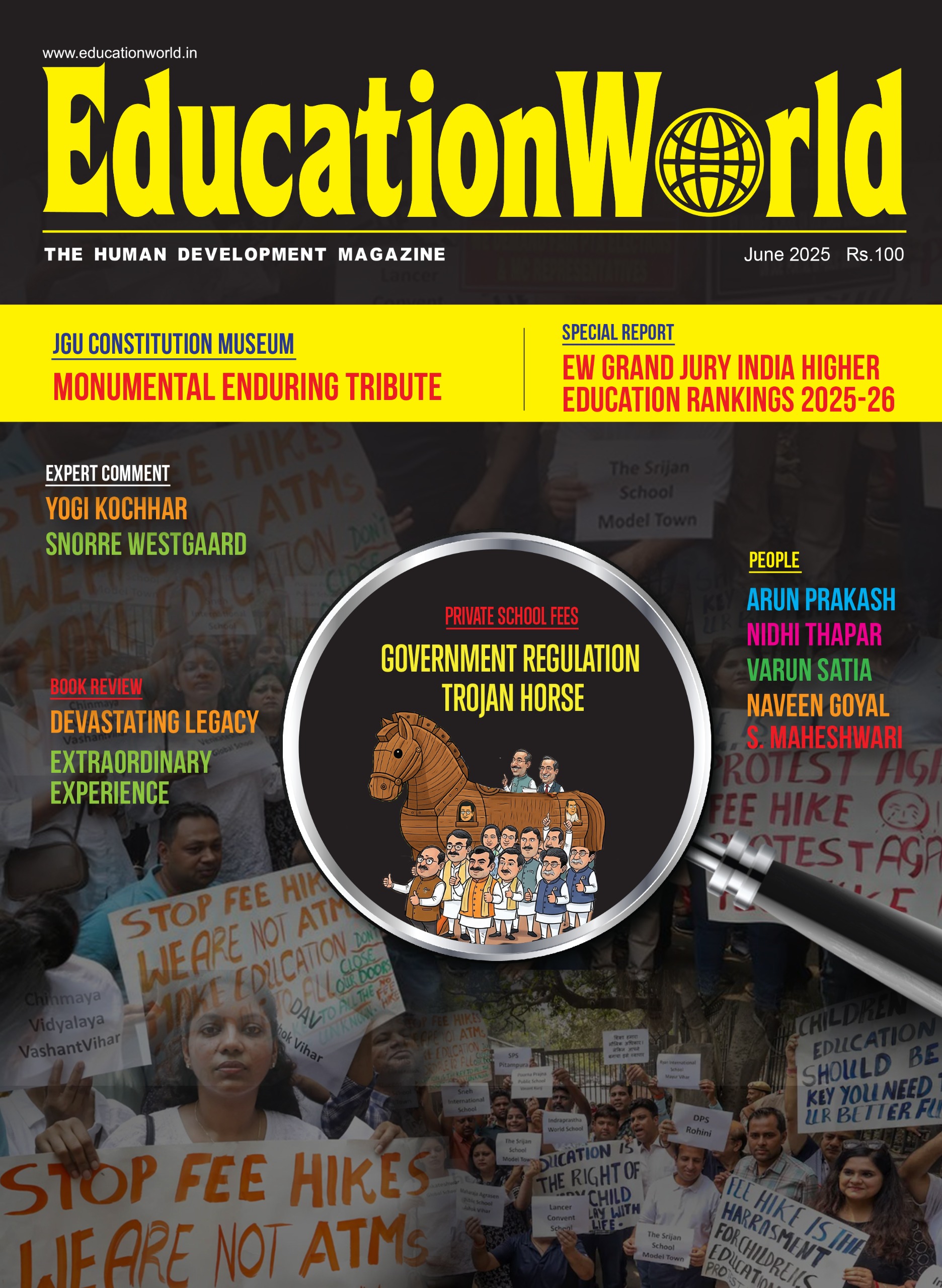Feminism in Islam: Secular and Religious Convergences by Margot Badran; Oneworld Publications, Oxford; Price: Rs.1,500; 349 pp
.gif) Even as almost everyone recalls a horror story about the misery and isolation of women in almost all countries of the Muslim world — and barbarous punishment claimed to be mandated by shariat law — there’s no shortage of books, volumes, treatises and essays written on the status of women in Islam by Muslims as well as others, with the vast majority of works on this furiously debated subject having been penned by men.
Even as almost everyone recalls a horror story about the misery and isolation of women in almost all countries of the Muslim world — and barbarous punishment claimed to be mandated by shariat law — there’s no shortage of books, volumes, treatises and essays written on the status of women in Islam by Muslims as well as others, with the vast majority of works on this furiously debated subject having been penned by men.
For most male Muslim writers, the status of Muslim women is central to interpreting the purity and differentiation of Islam. For non-Muslim scholars of Islam, it is a central trope in their critique of the religion. Caught in the cross-fire, diverse voices of Muslim women themselves have received scant attention in scholarly literature.
Margot Badran, senior fellow at the Centre for Muslim-Christian Understanding of Georgetown University, USA, is one of the foremost chroniclers of Muslim women’s struggle for gender justice. Feminism in Islam, her latest offering, broadly explores two types of struggles for equality waged in different parts of the Muslim world.
The first, which she traces to the colonial period, is what she labels ‘Muslim secular feminism’, through which women in several Islamic countries sought to assert their rights to education, employment and political participation as a means for the empowerment and advancement of the ‘nation’ and ‘community’. At the same time, these women were cautious to present their demands in accordance with the tenets of Islam. The second form of feminism is what Badran terms ‘Islamic feminism’, which emerged in a major way just a few decades ago. Much of this book sheds a revealing light on the forms, arguments and practical achievements of Islamic feminism.
Far from being an oxymoron, Badran asserts that ‘Islamic feminism’ is more radical and forceful than Muslim secular feminism. Islamic feminism, she states, is based on the firm conviction about the fundamental equality of men and women as creatures of God, as stated in the Quran. On the basis of this belief and their re-reading of the Islamic tradition, Islamic feminists argue that Islam mandates equality of women and men in all spheres of life, personal as well as public. This demand for equality, Badran says, extends even to the religious sphere, as regards religious professions and mosque rituals. Badran backs her case by citing certain Muslim women scholars — Aminah Wadud, Asma Barlas, Riffat Hasan, the better-known among them — who argue on these lines.
Yet the question needs to be posed and answered. Can elite women — many based in Western universities — represent a reform movement, within the conservative ijtihad tradition in the true sense of the term? This is an issue that Badran sidesteps. An assessment of the actual impact of Islamic feminists in terms of policy or legal changes, or women’s mobilisation at the ‘grassroots’, is missing in this otherwise engaging narrative.
Absent, also, is any substantial discussion about internal Muslim critiques of their essays, mainly, though not only, by conservative ulema and Islamist ideologues on their interpretations of the Quran and shariat law. This is an issue of immense practical import because on it hinges the possibility of popular acceptance of the Islamic feminists’ interpretations of the faith.
Besides elite Muslim women, some of who may insist on being called Islamic feminists, there is a much larger number of others who, working within a broadly defined Islamic framework, shun the label ‘feminist’ as being tainted by its association with the West. They frame their struggle in terms of a reversion to the teaching of ‘authentic Islam’, and not, as the title of the book suggests, ‘feminism in Islam’. They don’t go out on a limb as elite women-scholars, who Badran says are on the cutting-edge of ‘Islamic feminism’. Their demands are more modest, advocating women-led prayers for joint congregations. Yet, Badran seems to lump them together with Islamic academics inadvertently homogenising a very diverse set of voices. She chooses to regard even moderate and gradualist reformist women as representatives of ‘Islamic feminism’.
Despite these reservations, Feminism in Islam is an impressive work of scholarship and research, and will definitely serve the cause of Muslim women around the world, struggling for emancipation and equality in unjust patriarchal societies.
Yoginder Sikand
Not just hard work
Outliers: The Story of Success by Malcolm Gladwell; Penguin Books; Price: Rs.399; 299 pp
.gif) A staff writer of the highly respected New Yorker magazine, Malcolm Gladwell is among the contemporary world’s most innovative and perceptive social commentators and writers. In the millennium year (2000), he took time off to write the brilliant international bestseller Tipping Point, which explained how great ideas, new behavioural norms and revolutionary messages that change the mindsets and histories of nations, are communicated within societies and given wings by people classified as “connectors”, “salesmen” and “mavens”, pushing them to tipping point “levels at which change becomes unstoppable”.
A staff writer of the highly respected New Yorker magazine, Malcolm Gladwell is among the contemporary world’s most innovative and perceptive social commentators and writers. In the millennium year (2000), he took time off to write the brilliant international bestseller Tipping Point, which explained how great ideas, new behavioural norms and revolutionary messages that change the mindsets and histories of nations, are communicated within societies and given wings by people classified as “connectors”, “salesmen” and “mavens”, pushing them to tipping point “levels at which change becomes unstoppable”.
Tipping Point (somewhat belatedly reviewed on this page — EW January 2007) was followed by Blink (Penguin Books 2005) — not quite as successful but perhaps as insightful — which advanced the revolutionary proposition that first impressions — “rapid cognition” — formed in the blink of an eyelid may well be the best impressions, and should be given greater weightage in decision-making processes. Now in his latest work,Outliers (Definition 1: “something that is situated away from or classed differently from a main or related body”; Definition 2: “a statistical observation that is markedly different in value from others in the sample”), Gladwell brings the full weight and force of his powers of research, analysis and communication to investigate the complex subject of success, whether in industry, sports, music or life in general.
When narrating or explaining the secrets of the successful, biographies and particularly media profiles and narratives rarely go deep into the causes of why some people are more successful than others. The achievements of certain individuals who against the odds manage to clamber the slippery slope to the top of their business, trade or profession are routinely attributed to hard work, focus, application or innate talent.
The pitfall of this assumption is that the world is full of people of exceptional ability and high IQ who don’t get to the top. Gladwell’s interpretation of this conundrum is that class, cultural heritage, opportunity and luck play as important a role as the Puritan work ethic and personal abilities in shaping success in all fields of human endeavour.
Divided into nine eminently readable chapters followed by an epilogue detailing the family history of the author himself, Outliers begins with the curious history of a town named Roseto, USA built by Italian immigrants after an eponymous town in Italy, in the early 20th century. The mystery of Roseto where very few people suffered heart ailments — marking the township an outlier — is investigated and traced to the wholesale import of the casual, easy-going culture of the original Roseto in Italy.
In subsequent chapters the author describes the great role that chance and happenstance plays in shaping the lives of homo sapiens. A detailed analysis of the player roster of successful Canadian ice-hockey teams indicates that children born in January-March tend to dominate the thoroughly merit-based junior league (10-12 and 13-15 year olds) of Canadian ice-hockey, because children are grouped on the basis of age with January 1 as the cut-off date. Therefore, demonstrates Gladwell, children born in January-March who are bigger and more mature than those born in October-December perform better, get more matches to play and greater opportunity for intensive coaching which transforms them into senior league stars. Likewise in an evocative chapter titled ‘The 10,000 hour rule’, building on the premise that 10,000 hours of practice is as critical to success as talent and brilliance, be it computing or pianoforte, the author makes the case that practice on this scale is possible only for children born into upper and middle class homes with supportive and educated parents.
Illustrating his thesis, Gladwell cites the example of the man behind the computer revolution — Bill Gates, who was not only born at the right time, but was enroled in an elite private school in 1968, which was one of the first to provide computers with which children could experiment. Likewise, encouraged by his parents, music prodigy Wolfgang Amadeus Mozart started composing at the early age of six, which easily enabled him to devote 10,000 hours of practice for attaining genius status, reasons Gladwell.
Hard work (10,000 hours of practice), lineage and luck apart, another significant factor which heavily influences success is cultural legacy, argues Gladwell in this mind-expanding work. In an engrossing chapter ‘The ethnic theory of plane crashes’, he correlates the poor record of Korean Air in aircraft safety to the culture of rigid hierarchy and deference in the cockpit of the airline. Likewise the better maths performance of Asian children compared to their European and American counterparts, is brilliantly correlated to widely differing farming practices prevalent in the West and the Orient.
The author proposes that once the numerous factors — hard work, timing, luck, cultural legacies — that shape the success of individuals, organisations and societies are understood, it’s possible to create conditions to replicate the success of the successful. A prime example is New York’s publicly funded KIPP (Knowledge Is Power Program) schools. By consciously rejecting the Western academic cultural legacy of short hours and long holidays and creating study (and practice)-intensive Asian conditions, KIPP founders David Levin and Michael Feinberg triggered the growth of over 50 KIPP schools in the poorest inner-city neighbourhoods of the US, where maths learning has improved dramatically.
For Indian educationists and educators, there are valuable lessons embedded in this insightful and easy-to-read book. Among them: the importance of unlearning (like the Korean Air pilots) some glorious cultural legacies (rote learning, unquestioning obedience to academic authority); creating practice opportunities for children engaged in co-curricular and extra-curricular activities (towards the 10,000 hours practice objective); offering children in poor government schools the opportunity of extra study hours to improve themselves (the KIPP school experiment). Indeed the valuable message of Outliers is that societies need to work towards creating equality of opportunity rather than equality itself.
Given conducive environments which enable people who want to study and work, whole groups and communities will seize lucky breaks and transform opportunities into success.
Dilip Thakore























